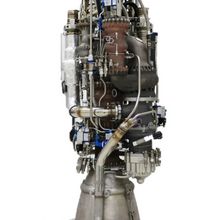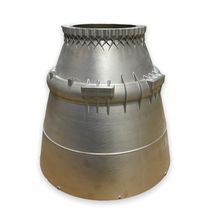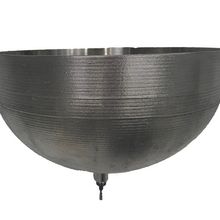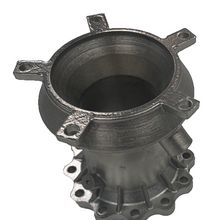Think 3D - where your future starts
→ High-quality & complex AM products → In-depth AM process know-how → Processes and materials
Additive manufacturing (AM) of components makes it possible to combine the freedom of geometric design with maximum material strength. MT Aerospace can draw on more than 50 years of experience in the field of lightweight construction and component optimisation and, with additive manufacturing, now has the possibility of implementing optimised structures without major manufacturing restrictions. Various technologies in metal and plastics processing are used for this.
In many industries, including aerospace, the need for lighter, stronger components made available more quickly is growing. For this reason, MT Aerospace decided in 2017 to open up a new AM business area and to position itself on the market beyond the aerospace industry.
Additive manufacturing at MT Aerospace
MT Aerospace can map the entire value chain of all necessary process steps, ranging from design layout, topology optimisation, process development, material selection, manufacturing, heat treatment, surface finishing and assembly up to comprehensive, non-destructive testing (NDI) and qualification/certification.
Our customers get everything from a single source: from your initial idea to series production; we can implement everything together with you. As an AM service provider on the European market, we offer a unique vertical range of manufacturing with the highest, reproducible quality. MT Aerospace is a premium supplier for AM components in the high-performance segment.
Regardless of the industry from which our customers' projects originate, the complete documentation of all processes is particularly important to us.
Range of services
We have in-depth AM process know-how
We produce customer components from prototypes to series applications
We have large manufacturing capacities of various technologies
We advise our customers on design layout and material selection
We develop and qualify new materials and process parameters
We work according to EN9100 and use opportunities for qualification/certification/NDI
We offer the entire value chain, from development to manufacturing to finishing and assembly, NDI and qualification.
MT Aerospace is your one-stop-shop for additive manufacturing processes
Selective Laser Beam Melting (PBF-M / LPBF / DMLS)
In PBF-M, material in powder form is selectively melted by laser. By repeating the process in a controlled manner, a component is created layer by layer. The fusion of individual layers by the laser produces almost homogeneous material properties of high density (~99.9%) and strength. After the printing process, the part is unpacked from the powder-filled construction space and further processed. The use of support structures is necessary to dissipate heat generated during the process. These reduce internal stresses and ensure that the component retains its shape. Among other things, the process is particularly suitable for detailed and functionally integrated components with good surface quality.
Powder laser deposition welding (DED)
DED stands for "Directed-Energy-Deposition" and describes the welding of metal powder with the aid of a laser source. The machine operates in 5-axis mode, just like conventional CNC machining/milling machines, with the exception that additive manufacturing is used here. The DED produces higher deposition rates than the PBF-M process, but is particularly suitable for rotationally symmetrical components. It is also possible to manufacture from different materials (hybrid) or to print on existing geometries so that defective components can be repaired. Here, coating by means of DED can also be used to protect parts against corrosion or wear.
Selective Laser Sintering (SLS)
The SLS process works in the same way as the PBF-M process, except that plastic powder is used. The impinging laser bonds the plastic particles to form the finished component. This produces much less waste heat than the PBF-M process, which is why there is no need for support structures here. This makes it possible to use the entire installation space for component production and leads to a unit price reduction for smaller components with higher quantities.
Reference project
The engine shown here consists of 60 per cent additively manufactured components. The core of the engine is the outlet nozzle shown below. The design freedom of additive manufacturing makes it possible to integrate cooling channels in the thinnest wall thicknesses, which ensure safe operation during the launch of the rocket. This saves mass and significantly shortens the manufacturing process chain. The nozzle withstands temperatures >1000°C and
can be manufactured within a few days using PBF-M.
-

Satellite half shell made of DED technology, material: titanium, construction time <5h -

Thruster-nozzle of a rocket launcher - PBF-M - IN718 -

Satellite half shell made of DED technology, material: titanium, construction time less than 5h -

Test component for drive system, material: 316L, PBF-M process, partially thin wall thicknesses

